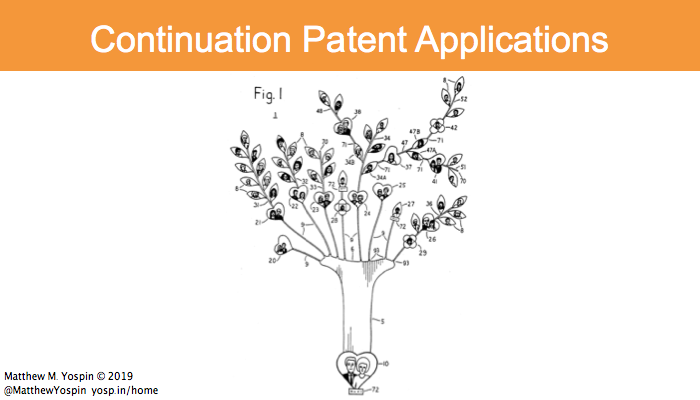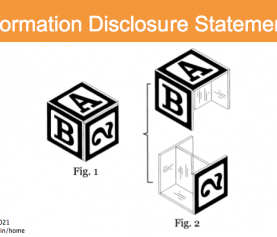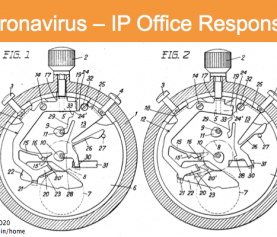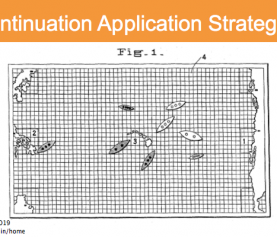What is a continuation patent application?
A continuation patent application is a patent application that lets you, the patent applicant, pursue patent claims that are based on the same invention description and drawings as another application you’ve filed that is still pending. The pending application is often called the “parent” application, and the continuation patent application, and any divisional patent applications or continuation-in-part patent applications, are called “child” applications, making up a patent “family;” they are sometimes referred to as a “continuation,” a “divisional,” and a “continuation-in-part.” Like any patent applications, they must all have an abstract, patent illustrations, a written description of the drawings (called the “specification”), and patent claims.
What is a continuation patent application?
A continuation is a new patent application, with the same patent illustrations and written description of the drawings, and the same priority date, as the parent patent application.
A continuation will have different claims than the parent patent application: the continuation’s claims might be broader, or might be to a different aspect of the invention than was claimed in the parent patent application, or might be to cover a competitor’s product or service that was described but not claimed in the parent patent application, and came to market after the parent patent application’s priority date. The key is that the continuation must have new patent claims, but cannot have new material in the patent illustrations or written description of the drawings.
What is a divisional application?
A divisional patent application is similar to a continuation, with the same specification and patent illustrations as the parent patent application, and the same priority date, but the divisional patent application presents patent claims that had already been filed with the parent application. These claims might have been voluntarily withdrawn or cancelled, or the applicant may have been required to do so in a type of Office Action called an Election/Restriction Requirement (see my blog post on Election/Restriction Requirements for more info). The claims can be submitted for examination, in a divisional patent application, at any time after making the election or restriction and before patent prosecution is closed on the patent family (e.g., before claims are issued or all pending applications are abandoned).
What is a continuation-in-part patent application?
A continuation-in-part application is like a continuation application, in that it contains the same specification and patent illustrations as the parent patent application, and also contains new claims that haven’t been presented before. But unlike a continuation, a continuation-in-part also contains new material, newly added to the specification and patent illustrations. The new claims are directed, at least in part, to the new material, and therefore the new claims have a different priority date than the original filing date of the parent patent application: they have, as their priority date, the date of filing of the continuation-in-part application.
If you’ve refined the invention, or added or removed elements of it, since the filing date of your first patent application in the patent family (that is, your earliest priority date), then a continuation-in-part patent application is worth considering.
A continuation-in-part can have claims that are directed only to the original material of the parent patent application, but it may be a better strategy – depending on the subject matter of the original-material-claims and of the new-material-claims, and how many claims there are – to file a continuation and a continuation-in-part application separately from each other.
This chart summarizes the application contents, claims, and priority dates of a hypothetical patent family.
Hypothetical patent family
| Application | Application Contents | Patent Claims | Priority Date |
|---|---|---|---|
| Original patent application (“parent”) | Original | Original, or as amended | Parent filing or priority date |
| Continuation patent application | Original | New, not previously presented | Parent filing or priority date |
| Divisional patent application | Original | Previously presented | Parent filing or priority date |
| Continuation-in-part patent application | Original, plus new material | New, not previously presented | Filing date of this application |
When can a continuation patent application be filed?
A continuation application can be filed while a parent patent application is pending – the parent application can be newly filed, or filed years ago and still pending, and can have patent claims allowed. So long as the parent patent application has not had the claims issued, or been abandoned, a continuation can be filed, as can a divisional patent application or a continuation-in-part application.
If you’ve received a Notice of Allowance in your patent application – that is, you’ve had patent claims allowed in an application – you should decide soon if you want to file a continuation, so that you have enough time to prepare the new claims and file them before filing for the issuance of the allowed patent claims. The USPTO has a three-month deadline for paying the issue fee and any publication fee, and that time period is not extendable (many USPTO deadlines are, but not this one). If you want those claims issued, you don’t want to miss that deadline! And you must file any continuations, or continuation-in-part or divisional patent applications, before you file for issuance.
How much does a continuation, divisional, or continuation-in-part patent application cost?
The costs of preparing and filing a continuation application are primarily the costs of discussing the strategic considerations and choosing what the patent claims should be directed to, writing the claims, preparing the filing paperwork, and filing the application. There are also USPTO fees – see my blog post on filing fees, and this link to the current USPTO patent fee schedule. The time needed for discussion can vary widely, as can the time for drafting the claims, depending on the subject matter and how many claims we’re planning to write. Applicants should expect a rough cost of about $3,000 to $6,000 for planning, claim writing, and filing, plus the USPTO fees (and take a look at my blog post on patent filing costs to compare to the cost of a new patent application). Similarly, for a divisional patent application, there are strategic considerations, but the claims have already been written previously, so the cost is reduced relative to a continuation.
For a continuation-in-part patent application, the costs may be higher than the approximate ranges for a continuation, because the application requires additional patent illustrations and additional material in the specification.
Questions on continuation applications?
Do you have questions about your options for expanding your patent family? Take a look at my post discussing strategies for continuation patent applications. Call me at 617-340-9295 or email me at my Contact Me page. Or, find me on LinkedIn, YouTube, Facebook, Twitter, or Avvo. Curious about the patent image at the top of this blog post? It’s from US Patent 5,246,374, for an “Expandable family tree and modular kit for building the same.”






[…] the patent application (with or without filing a continuation application or CIP, see below and this blog post for more info), and appealing to the […]
[…] petition – for all the filing fees again, plus the fees for Track One examination. Please see my blog post on continuation patent applications for more […]
[…] and divisional applications, and probably continuation-in-part applications – please see my blog post on continuation patent applications for more information. By keeping an application pending, you hedge against the possibility of one or more of […]
[…] writing of the claims, and preparation and filing of the application. Take a look at my blog posts on continuation patent applications and on patent application costs for more […]
My vcard